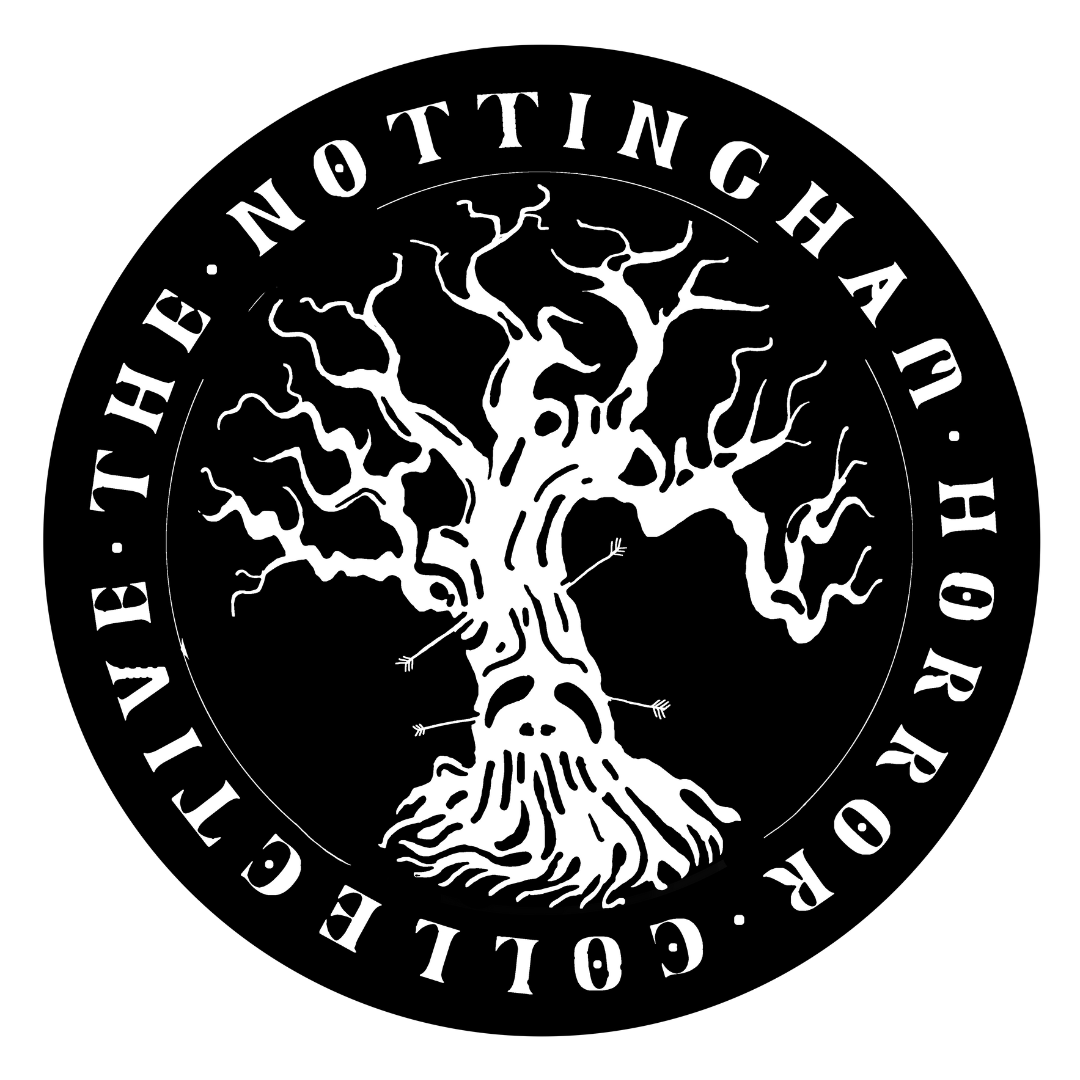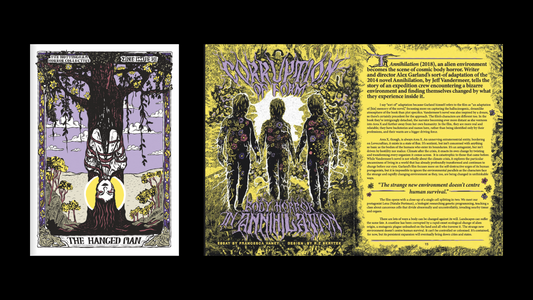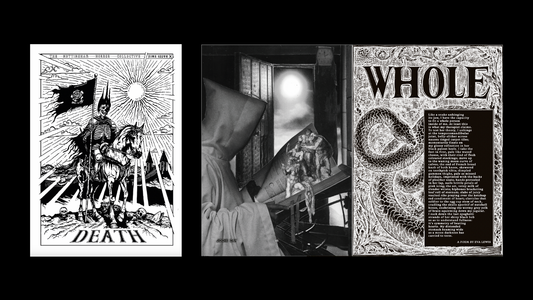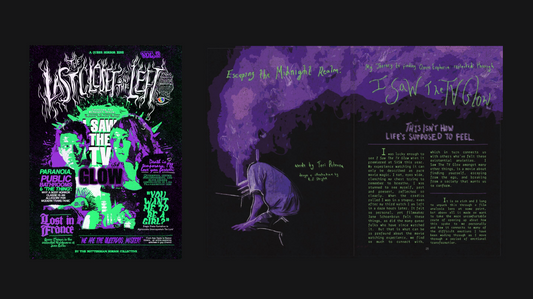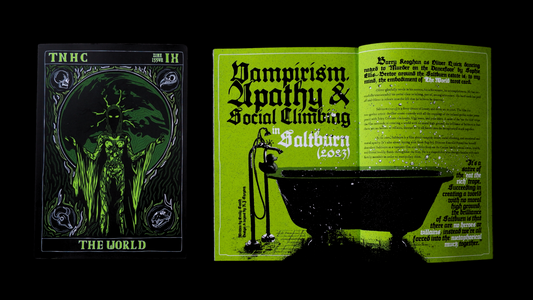‘How do we deal with stories about the dead and their ghosts? How do we inhabit and move through spaces that we’ve deemed haunted?’
From cursed lands to haunted houses, the world is full of ghostly tales. Wherever you’re from, I’ll bet there’s a certain building or spot of land with a spooky story behind it, probably told to keep local kids out of trouble. I remember the story of an old lady who would haunt the overgrown walkway between our houses and the fields. The descriptions were detailed: grey cloak, curly fingernails and a ravenous appetite for children. Needless to say, we never strayed far from our houses when the sun went down.
In Warwickshire, there’s a beautiful pub my parents would take us to —The Saxon Mill. A short run from it, through the fields and over the river, is a huge, abandoned, grade II listed house. Dating back from 1751, the estate has had many inhabitants. It was used as a hospital in World War I, and later in the second World War it was a school for evacuated children. Since a devastating fire, its ruins have been left to be claimed by the nature surrounding it. But many inexplicable things are said to still happen here. The energy is described as distinctly negative, with curious visitors reporting sudden feelings of extreme sadness and even nausea.
Due to the history and tales surrounding it, local parapsychologists now offer ghost tours of the Guy’s Cliffe house a few times a year. So it’s not just me who has always been fascinated by the house’s eerie presence. I think within us all, there’s a small dose of morbid curiosity around what lies beyond death, but I’d always wondered why so many of us often become drawn to these ‘haunted’ structures. That is, until Colin Dickey wrote Ghostland.
Frankly, there was a strong pang of jealousy for me as I read this one. Colin travelled to every notoriously spooky place in America — the motherland of horror film clichés. Burial grounds, abandoned asylums, haunted mansions, witch towns — you name it, it’s in this book. The more I read, the more I wished I could pack up and go on my own spooky tour. Ghostland shares some of the most deliciously chilling tales, unsettling historical facts, and eye-opening psychology around the relationship between these American haunts and the feelings they conjure in us. I begrudgingly devoured the whole damn thing.
One of the first things you’ll become aware of when beginning this haunted tour with Colin is that he’s completely neutral about ghosts. In no way is he another Yvette Fielding or Zak Bagans; he isn’t at all trying to prove the existence of paranormal activity. Instead, he tells the spine-chilling legends and then thoughtfully explores the social, historical, and psychological aspects which conceived their stereotypes. Why do we say this place is haunted? Is it simply certain architectural aspects which make it so? What is this place’s true history, and where did these stories come from? All of these questions and more are answered, chapter by chapter; place by place.
I learned a lot of quirky historical facts from this book, which I wasn’t initially expecting to. I won’t lie, I was strictly here to be spooked. But, for instance, did you know that early suffrage meetings were heavily populated by Spiritualists?
‘Spiritualism had given many of these women practice and confidence in speaking to groups with authority; by allowing others (the dead) to speak through them, American women began to speak for themselves in greater numbers. Spiritualism was only one of many factors and social movements that drove women’s suffrage, but it was a vital and important one.’
And I also realised why, in my university days, I always felt a sudden eeriness whenever I was left alone in the library late at night:
‘Few things are more unsettling than being somewhere emptied out, after everyone else has left. If you’ve ever worked a closing shift, or as a security guard, you know the way a place can change after the doors are locked and the lights are dimmed, when the lighting so carefully designed to spotlight the latest gadgets goes slack, when the mood lighting gets moodier. It’s as though you don’t belong there.’
It’s these little musings and scraps of knowledge woven into the narrative which make Ghostland a read even non-spooks can appreciate. Bit by bit, they reveal a gloomier American history which is so rarely mentioned in academic books.
If you were after an anthology of ghost stories to scare you silly, you’ve managed to pick up something which gives you so much more. This is not a cheesy ghost hunter TV show-turned-book. It’s a psychological and historical exploration into why certain places are deemed haunted, where the stories come from, and why we continue to tell them.
Of course, I don’t know whether ghosts are real or not — I don’t think anybody does. But the legends made for a spine-tingling late-night read, and I learned a lot about the repressed history and social anxieties which contribute to these American-grown haunts. After all, ‘to answer our questions about the dead, we must first focus on the living’.
From his musings around the language we use to describe these places, to the discussion of modern American culture, early feminist movements and 19th century Spiritualism, Colin dickey’s ghost tour is entirely absorbing. I’ll probably keep it in my tote the next time I get the chance to roam around The States, and I’d recommend you do, too.
By TNHC's Editorial Director, Emily Malone.
